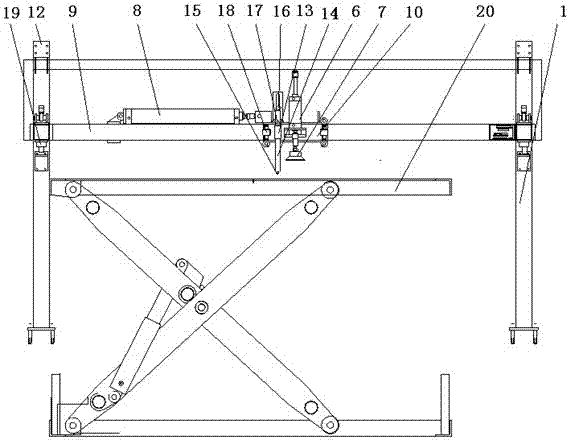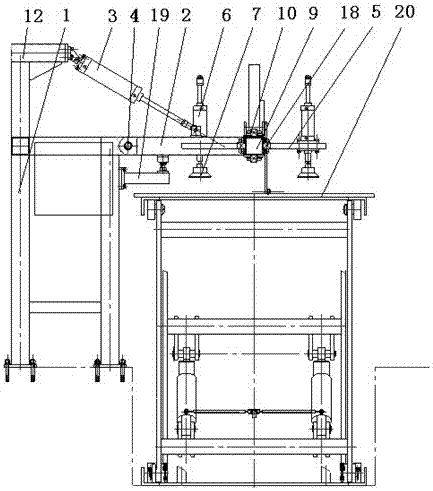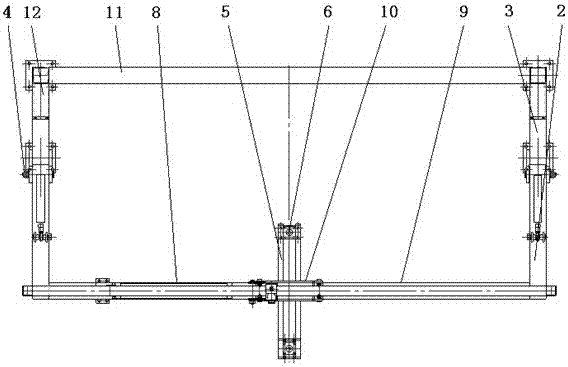Single board automatic feeding machine
A technology of plate feeding machine and veneer, applied in the direction of object supply, pile separation, thin material processing, etc., can solve the problems of high labor intensity, high labor cost, and high production cost of operators, and achieve low labor intensity and labor cost. low, high efficiency
- Summary
- Abstract
- Description
- Claims
- Application Information
AI Technical Summary
Problems solved by technology
Method used
Image
Examples
Embodiment Construction
[0014] Below in conjunction with accompanying drawing, the present invention is further described:
[0015] As shown in the accompanying drawings, a veneer automatic board feeding machine is characterized in that it includes a fixed frame, a turning rod 2, a control system, a turning cylinder 3, a rotating shaft 4, a suction cup bracket 5, a lifting cylinder 6, a vacuum suction cup 7, and a moving cylinder 8. Fix the guide rail frame 9 and the sliding sleeve 10. The fixed frame is composed of the outrigger frame 1 and the connecting rod 11. One side of the two outrigger frames 1 is fixedly connected by the connecting rod 11, and the two ends of the other side are respectively connected by the rotating shaft 4. Hinged with the overturning rod 2, the top of the leg frame 1 is provided with a overturning cylinder 3, one end of the overturning cylinder 3 is connected to the connecting rod 11 through the support frame 12, and the other end is connected to the overturning bar 2, so t...
PUM
 Login to View More
Login to View More Abstract
Description
Claims
Application Information
 Login to View More
Login to View More - R&D
- Intellectual Property
- Life Sciences
- Materials
- Tech Scout
- Unparalleled Data Quality
- Higher Quality Content
- 60% Fewer Hallucinations
Browse by: Latest US Patents, China's latest patents, Technical Efficacy Thesaurus, Application Domain, Technology Topic, Popular Technical Reports.
© 2025 PatSnap. All rights reserved.Legal|Privacy policy|Modern Slavery Act Transparency Statement|Sitemap|About US| Contact US: help@patsnap.com



